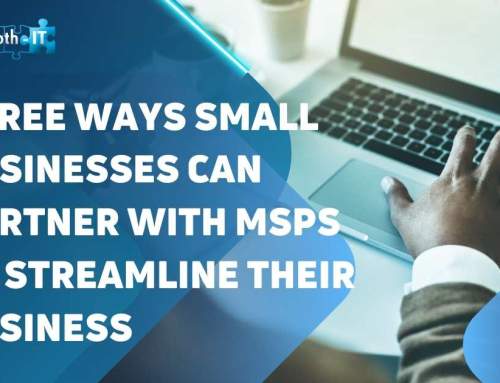As we begin a new year, business owners start the frantic work of planning and goal-setting for the year ahead. You be working on the overall business, marketing, and sales strategies to help set you up for success in 2023. But what about IT Strategy? The technology you use every day impacts your business daily, so I’d take a moment to encourage you to consider technology in your strategy and planning processes. You might be reading this saying, “But Ben, there are so many other things I have to worry about. Is IT strategy essential?” Well, the answer is yes.
What is an IT Strategy anyway?
An IT strategy, in its most basic of forms, provides a roadmap outlining what technology your business uses, is going to use, or needs to find, how your tech is going to be used and why, what value the software and hardware you use to bring to your business, and how that value aligns with your overall business goals.
You may think I’m biased because I’m an IT professional, but I’m also a business owner whose business has adapted and evolved as new technology arises. More and more aspects of my business and yours rely on the tech that works, and developing a strategy around IT infrastructure will make all of your business efforts much more impactful. Still not convinced?
Here are four specific areas of your business that your IT strategy directly impacts.
Budget/Costs: There’s no denying that technology influences our business budgets in a variety of ways.
- The most obvious example is the initial cost of your tech stack (the hardware and software you utilize regularly). Investing in the right technology is crucial. Your IT strategy will help provide guidelines around and investing in appropriate technology for your business based on various aspects, including cost, usability, added value, etc.
- In addition, not investing in the right tech also carries inherent risks. For example, imagine you are a victim of a ransomware attack, don’t have a backup solution, and your business goes down for three days. What will the time lost and the investment to fix the issue cost you? IT infrastructure must be considered.
- Let’s not forget that your IT stack can create efficiencies that can help save time and money. A great IT strategy, aligned with your business goals, can help make you more profitable over time as well.
Operations: IT impacts day-to-day business operations. A clear IT strategy will help provide your business with guidelines regarding the following:
- Technology usage and licensing guidelines for employees
- Company-specific security best practices and regulations
- An overall map of how your IT infrastructure furthers the business goals you’ve set forth for your company
Client Support and Satisfaction: If you are storing customer data or utilizing an email, chat, or ticketing system to support your clients, technology is already a central part of how your client experience. Your IT strategy helps define how you interact with customers, how their data is stored and protected, and which platforms you utilize in both instances. The strategy can also define future improvements around this area of your business.
Communications: Last but certainly not least is communication. We all rely on technology today to have seamless communication. We often take communications channels for granted but just think about that feeling you have when your phone dies or you lose internet access and can’t join an important meeting. Now think about how tricky daily business would be if your company’s phone system and network access were down regularly. These services are part of your IT strategy and your tech stack.
This is only a small list of the many ways your IT strategy directly impacts your business. Strategy is a thorough plan that outlines how your technology infrastructure aligns with and supports your overall business goals. At Smooth-IT, we combine our experience with our understanding of your business to createa customized and comprehensive IT strategy for your company. Reach out to start a conversation with our team today.






Leave A Comment